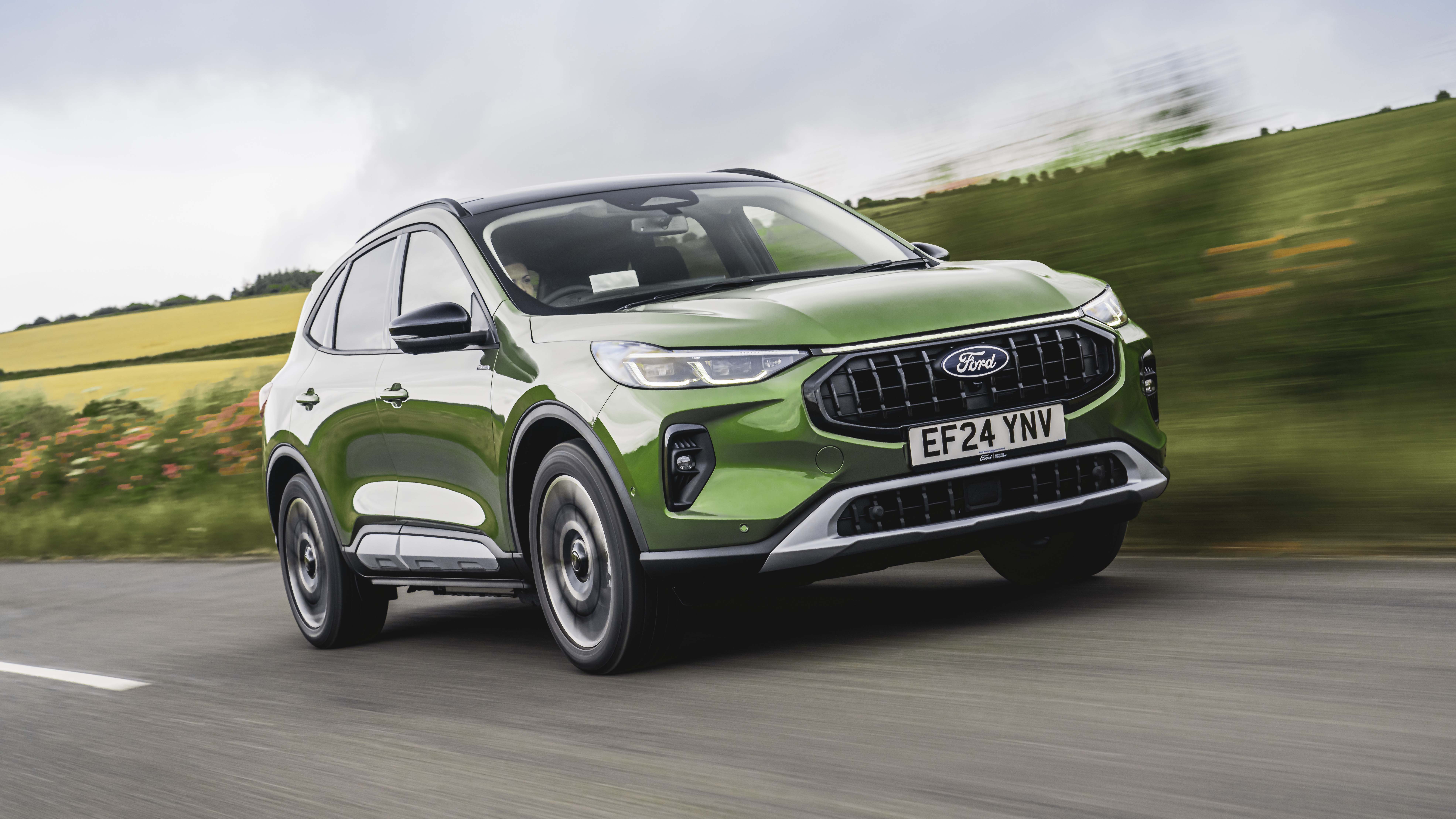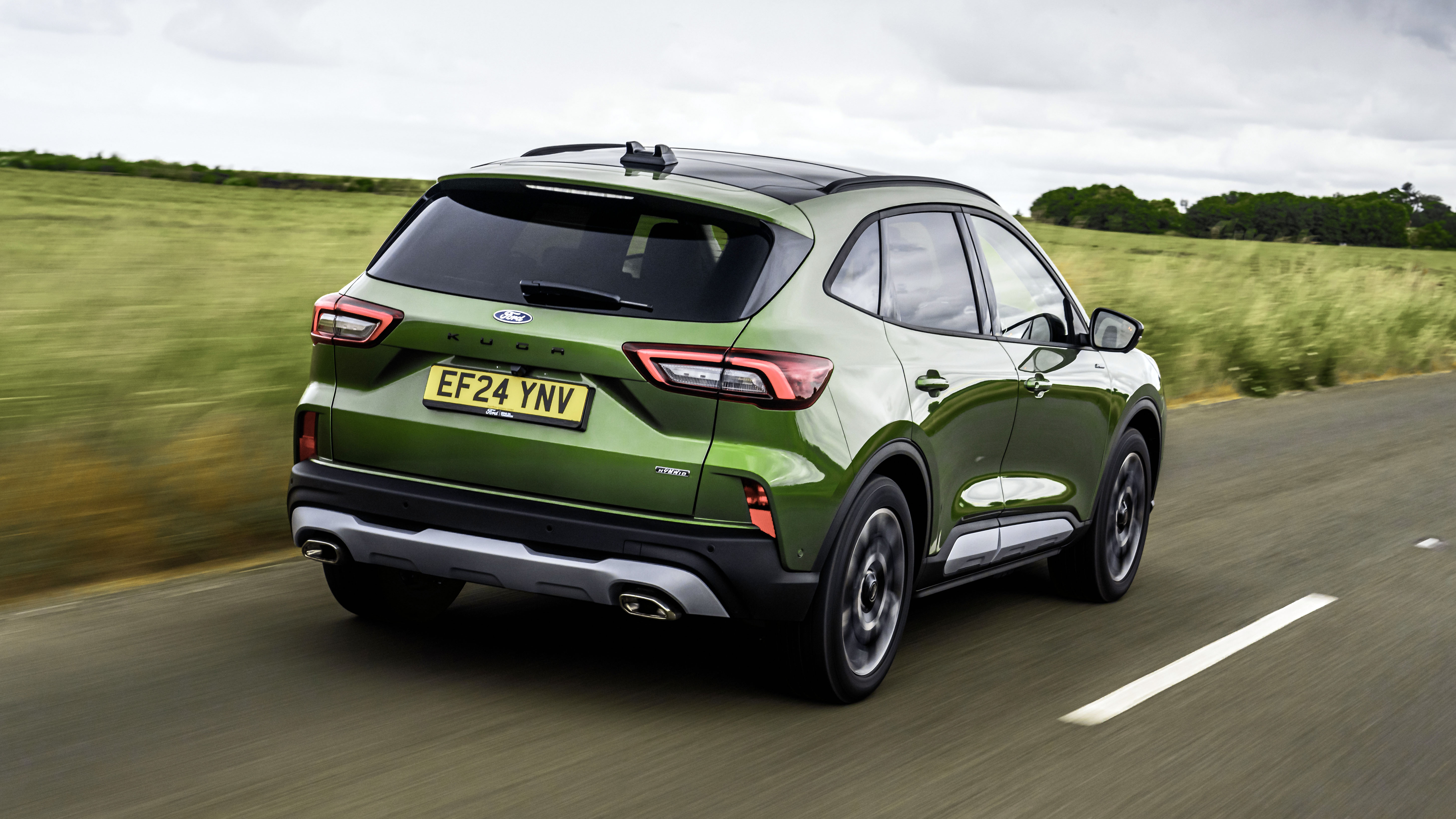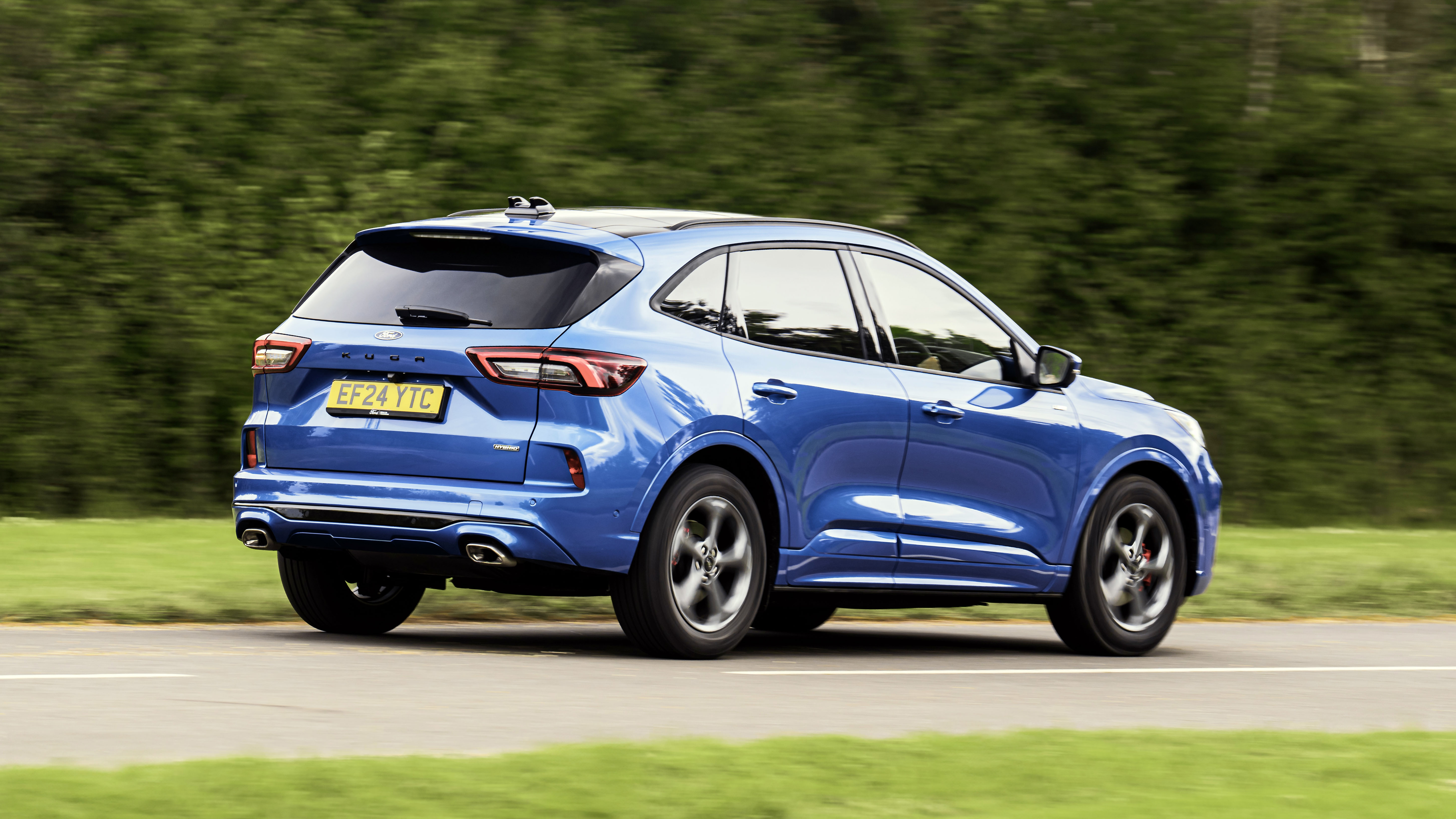
Good stuff
Handling, powertrain choice, simplicity, space, a solid all-rounder
Bad stuff
Bland looking outside, blander and dowdy inside, little physical switchgear
Overview
What is it?
The third-generation Ford Kuga, newly facelifted for 2024. Indeed, this generation has been with us since 2019 so it was well due, as it attempts to stand out in a hugely crowded sector that includes the like of the BMW X1, Hyundai Tucson, Kia Sportage, Mazda CX-5, Nissan Qashqai, Volkswagen Tiguan. You know the type.
You can have it with plain petrol power, as a full hybrid (in two guises, FWD and AWD) that juggles petrol and electric power, or there’s a petrol plug-in hybrid (PHEV) that can run for up to 42 miles on electric power alone. If you’re after a fully electrified Ford, you’ll need to look at the Mustang Mach-E or Explorer.
What's new?
The eagle-eyed will have noticed the new front grille, LED light bar, and repositioned logo, but otherwise the exterior revisions are minimal. The Kuga has always been a little plain looking to our eyes but otherwise entirely inoffensive – which goes some way to explaining why it’s been Europe’s best-selling PHEV for the past three years running – and as the saying goes, if it ain’t broke, don’t fix it.
Inside, it now gets Ford’s latest SYNC 4 infotainment system, while the driver assistance systems have also been upgraded to include Ford’s next-generation adaptive cruise control complete with adaptive braking, plus a 360-degree camera with aerial view.
How big is it in the real world?
Quite a lot bigger than the old Kuga, which Ford says adds up to the most occupant space in the class. We’re inclined to agree: the Kuga feels half a size bigger inside (and it gets a sliding second row of seats too) than something like a Nissan Qashqai or Kia Sportage. Which is great, until you come to park it, of course.
There again, Ford reckons the Kuga can tech its way out of a problem, with its fleet of (already impressive) sensors and driver aids also upgraded as part of the facelift. Nothing new for the class, or for Ford, or particularly revolutionary. But if you’re upgrading from the old Kuga, this is going to seem a heck of a lot more advanced.
Fords are meant to be good to drive too, right?
Yep. And just like the truly top-of-the-class modern Fords – the little Fiesta (RIP), and its taller Puma cousin – the Kuga handles with responses it really has no right to. You could almost call it fun.
Most of the time, it’s just a very sensible family car that does nothing a Focus Estate wouldn’t manage, but does it with more ride height, more headroom, and more look-at-me-in-my-SUV zeitgeisty panache. Which is what folks want, from their Renault Capturs right up to their Rolls-Royce Cullinans.
How much does it cost?
Prices start from £32,095 for the base petrol, rising to £38,565 for the full hybrids, and £40,555 for the plug-in hybrids. Full details over on the Buying tab.
Our choice from the range

What's the verdict?
The Kuga is extremely rounded... notwithstanding its rather ordinary styling. It’s well equipped, very grown up, and showcases all of Ford’s knowhow from the Fiesta and Focus when it comes to how it goes down the road.
Little surprise, then, that it’s Ford’s best-selling SUV in Europe, with over a million sold since it was first launched in 2008. But this is the first time it’s really felt like it’s a class challenger rather than just another car.
The Rivals
Trending this week
- Car Review
BMW 1 Series










